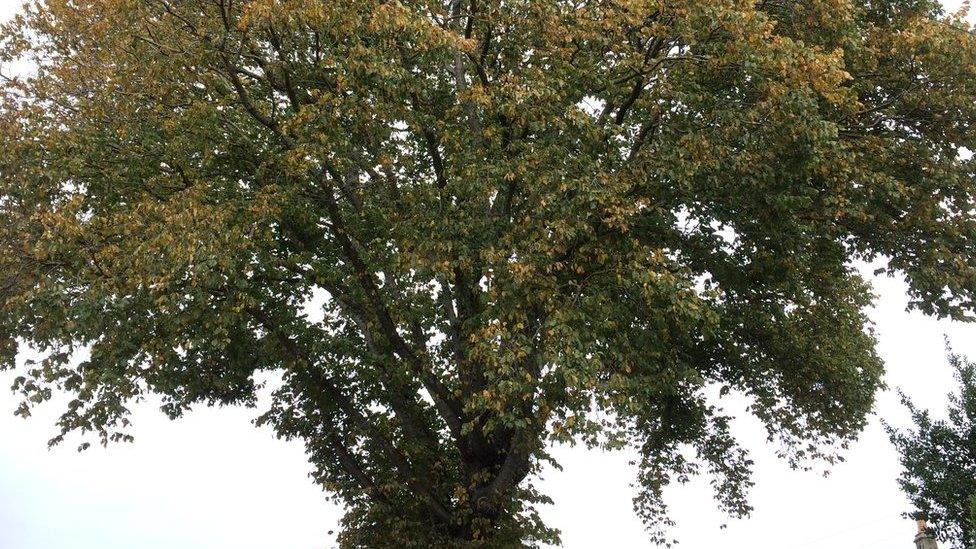Warm weather helped spread of tree disease in Highlands
- Published

Experts hope elms in the Highland will have some resistance to the disease
This summer's warm weather conditions have speeded up the spread of Dutch Elm Disease in the Inner Moray Firth area.
A large number of trees have been infected in and around Dingwall over the last few months.
The disease is a fungal infection spread by tiny bark beetles. It can rapidly wither and kill healthy trees.
Forestry Commission Scotland (FCS) is asking the public for help to monitor and slow down the progress of the disease further north and west.
'Flying bark beetle'
Dutch Elm Disease arrived in the south of England in the 1960s and since then it has spread across much of the British mainland, massively reducing the elm population.
In recent years it has been moving west through Aberdeenshire and Moray and into the Highlands, but it was hoped that the lower density of elm trees, cooler climate and prevailing winds would slow down its progress.
However, FCS said this summer's warm weather conditions have resulted in its rate of spread increasing around the Inner Moray Firth area.

The disease can destroy elms
Tree health operation manager, Paddy Robertson, said that it was a shame that some of these handsome trees in the area are succumbing to Dutch Elm Disease.
He said: "It passed the river Findhorn a few years ago now and I have been hearing reports of infections in the Inverness area for the last two or three summers and it appears it has become more prevalent this summer possibly due to the very warm conditions.
"The insects that spread the disease do well in warm conditions.
"This particular species of flying bark beetle on its own isn't particularly disruptive to the elm trees but they bring with them this fungal pathogen and between them they work extremely effectively at passing this disease around.
"And it will kill the trees pretty quickly. It was pretty destructive in southern England where there had been a lot of elm trees.
"What you are finding in the Inverness region now is people noticing trees in the landscape that have suddenly gone the wrong colour towards the end of summer. It's very obvious when it arrives."
Slow the spread
Mr Robertson said the the decline of infected trees can be rapid. but expects some trees to show some sort of resistance or resilience.
He said: "We don't think it is going to be terrible. Even in the south of Scotland where Dutch Elm Disease came through 20 to 30 years ago you still have elm trees in the environment there is just nothing like as many as there used to be."
FCS have been advising Highland Council on measures to slow its spread.
They are also asking the public not to transport elm timber with the bark on any distances, especially going north and west to areas where Dutch Elm Disease is not present.
Reports of suspected infected trees can be submitted through the website Tree Alert, external.